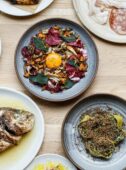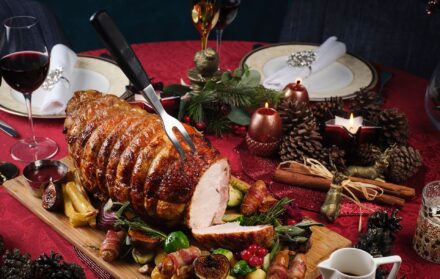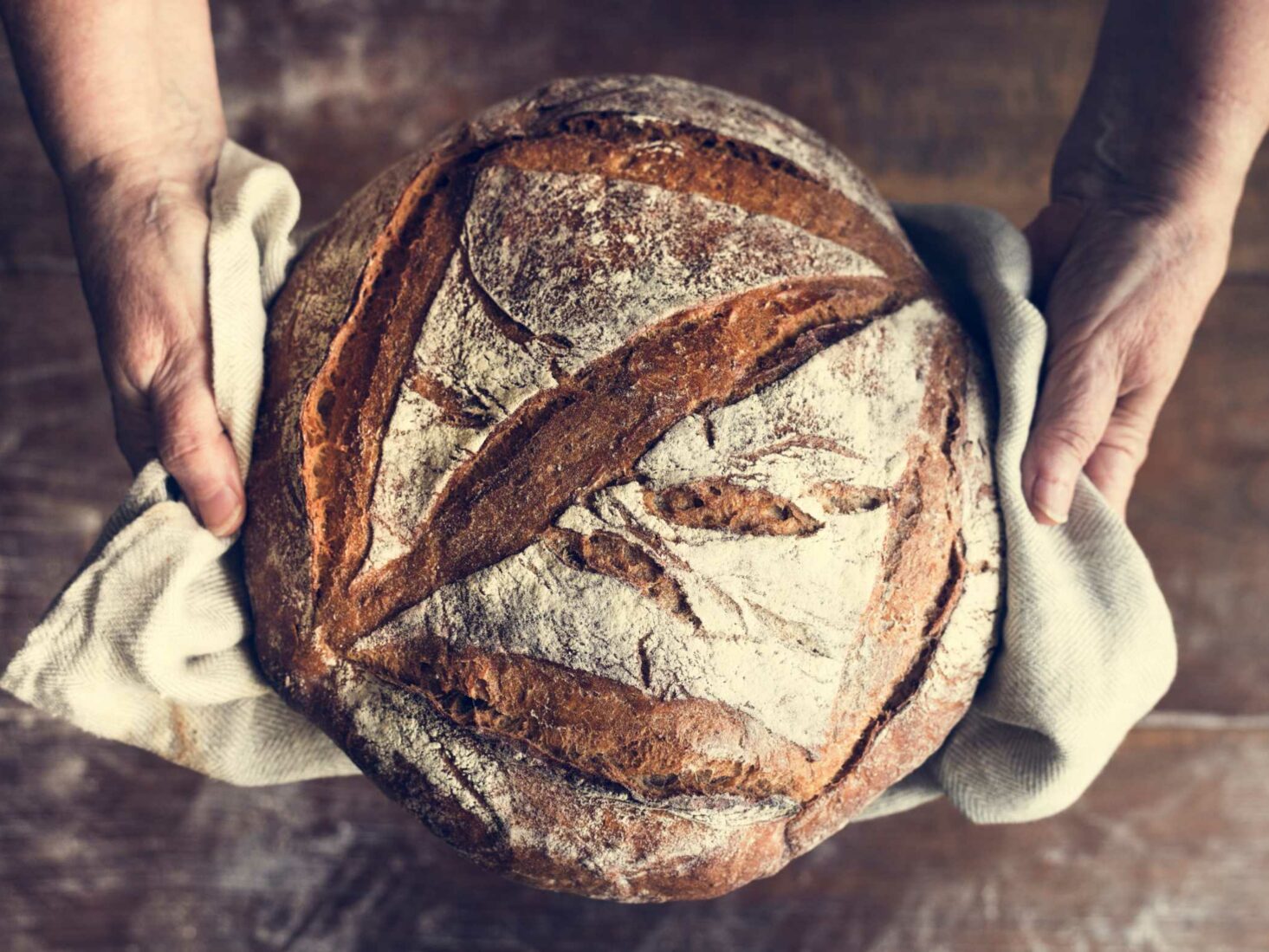
The chefs’ guide to baking bread at home: tips and tricks for complete beginners
Baking bread was the breakout hobby of 2020, with the humble sourdough becoming a favourite of home bakers across the nation. We asked four chefs to share their top bread-making tips that even the most-inexperienced of
The world shut down and we all took to the kitchen. From banana bread to sourdough loaves, people across the globe have sought comfort in baking during the pandemic. For those who’ve yet to embrace their inner Paul Hollywood, the prospect of baking bread can seem a little daunting and technical – making and feeding a sourdough starter seems far more complicated than simply grabbing a loaf of sliced white at your local supermarket. But there are simpler and more beginner-friendly alternatives to kick-off your baking journey. Here, four British chefs share there top tips for making – and eating – bread at home.
Oli Marlow, Executive Chef at Aulis
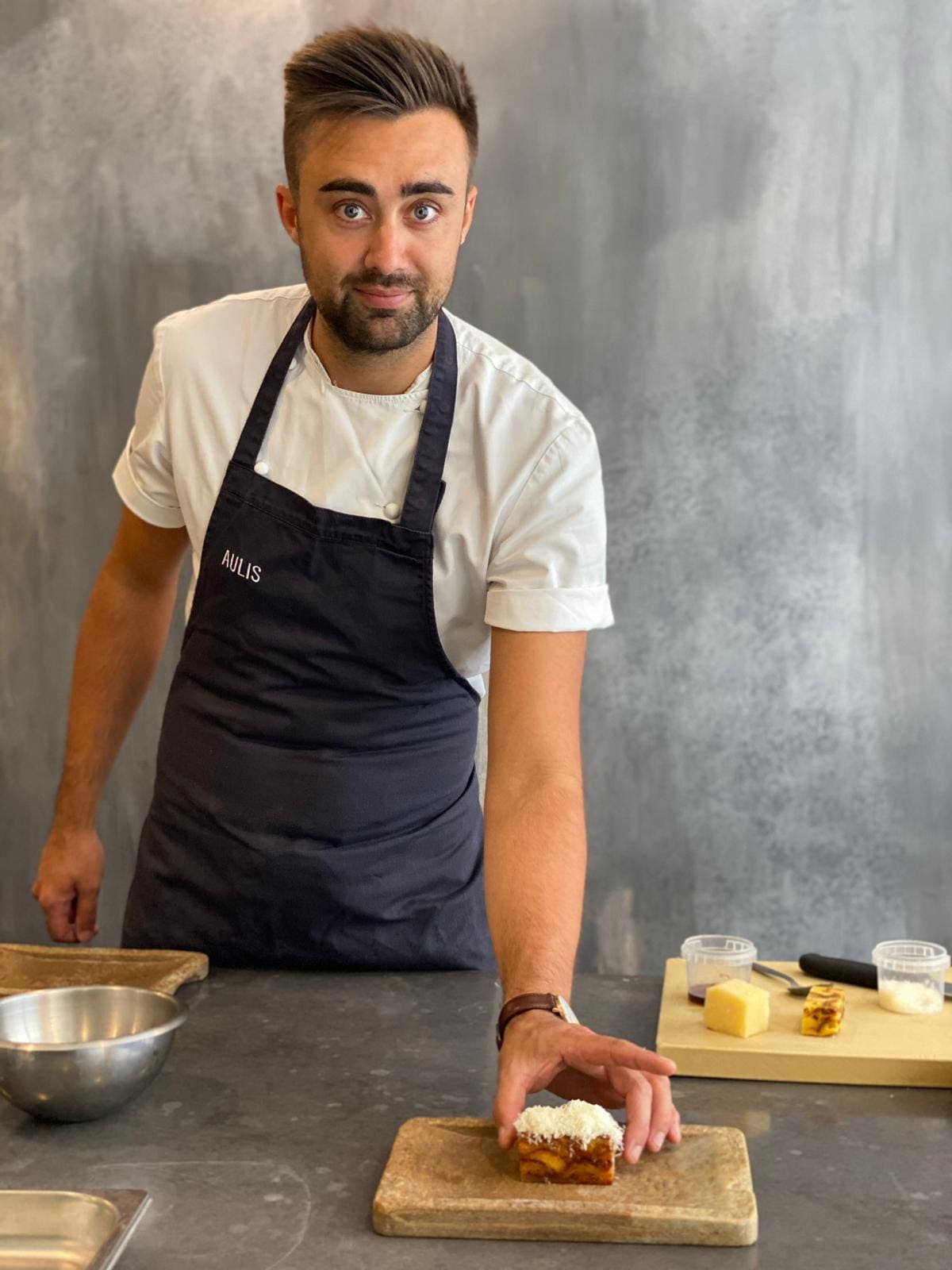
The Michelin-starred chef and Simon Rogan protégée recommends a simple crumpet recipe:
For first-time bakers, I’d recommend making a bread that doesn’t require a lot of processes or time. I’d suggest something very simple, such as crumpets. My top tip would be to purchase a bread mould or tin. Gaining the perfect shape is something that can become very frustrating to a young baker.
When making bread you can be very adventurous, and adding fermented goods is always an interesting touch to make it a little sour, such as fermented apple. This could be in cider form, kombucha or vinegar. It will give a depth of flavour to your bread.
My favourite bread is 100 per cent dependent on my mood. If I’m at home, I love a simple white sliced loaf stuffed with bacon. When I am dining out at a special restaurant, I do love a good sourdough. I appreciate the skill and technique that goes into a bread that has so few ingredients (normally just flour and water).
At Aulis, we currently serve a traditional soda bread. It’s very much like a muffin with a sweet top. It’s very satisfying and a little different to what you would normally get in a restaurant. I always love serving bread warm or toasted with too much butter.
Oli Martin, Head Chef at Hipping Hall

The Masterchef: The Professionals winner recommends making ciabatta, his favourite bread:
I fully recommend giving ciabatta a go at home; it’s a super-simple recipe often comprising just flour, water, salt, yeast and oil — so you’ll probably have most of what you need already in your cupboard. You can then make it as complicated as you like by adding multiple things into the dough, so it’s a winner for all bakers, from the pros to the novices. Also, you don’t need an expensive mixing machine, just your hands and some time. My top tip is to take it slow and really understand the recipe before you start; there is a lot of proving and folding, so make sure you’ve read the recipe properly first.
To serve, you can do anything. I often have it stuffed with roast gammon, a big dollop of mustard and a handful of rocket. It’s great for open or closed sandwiches, or even to put into a panini machine if you fancy something cheesy and indulgent.
I like to fold different flavours through the ciabatta at the different stages for proving; pesto or tapenade are always good — salty and nutty and all-round moreish. But most of the time I just stick with some good quality mature cheddar and a little diced onion, which I’ll stir through. Divine.
I most often make ciabatta at home. It’s so easy, and you can leave it for many, many hours and get on with something else. It’s way less demanding than sourdough. Although, it can be a bit of a messy job so I usually do some cooking at the same time – may as well make a proper mess while you’re at it!
Charith Priyadarshana, Head Chef at Paradise Soho
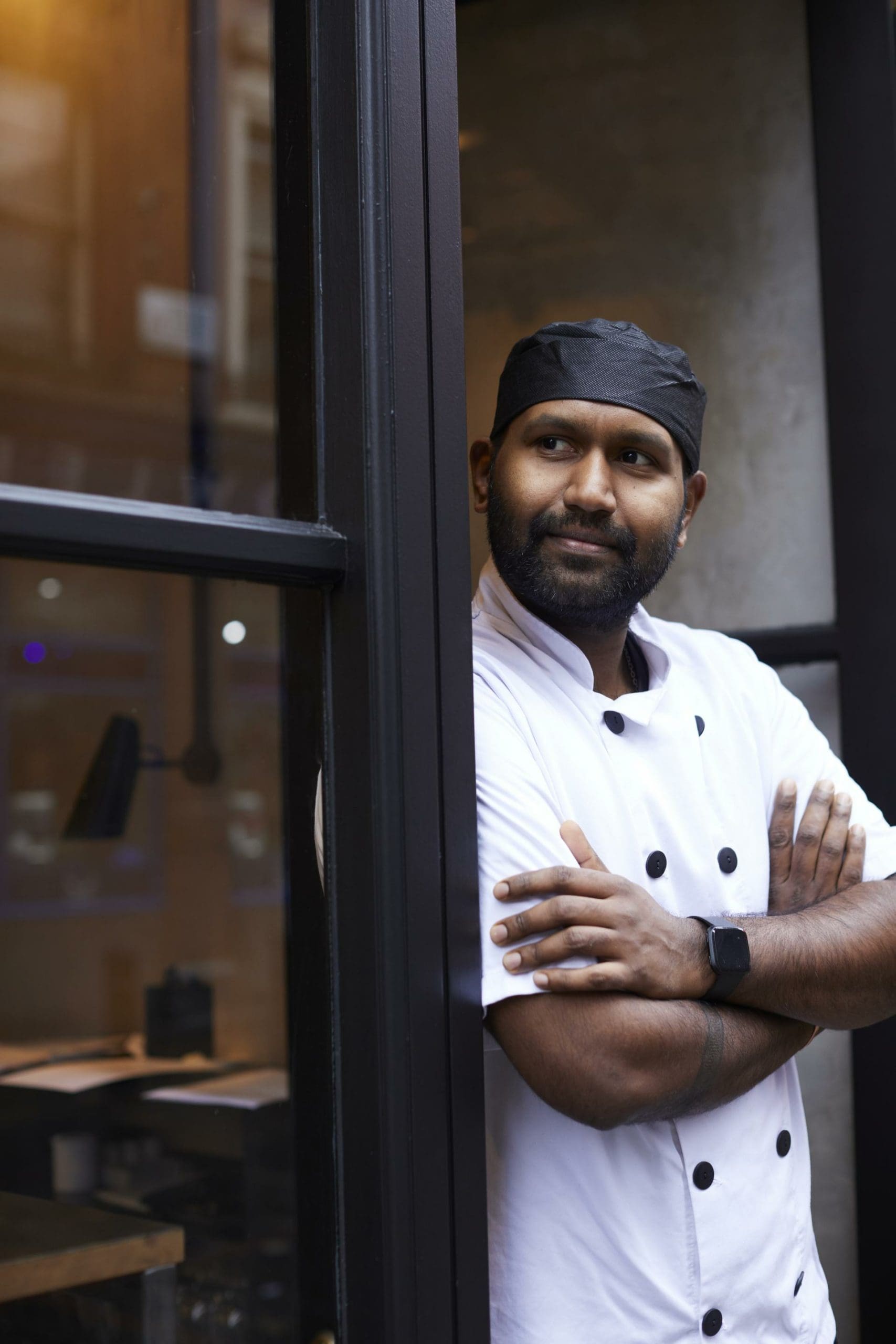
The Sri Lankan chef shares a sweet bread recipe inspired by his home nation:
I would recommend making coconut bread – a modern-day take on a traditional tea-time Sri Lankan snack. It’s a great recipe for first-time bakers – and will be so moreish that you won’t want to stop eating it! Preheat the oven to 180 degrees C (350 degrees F). Lightly whisk eggs, milk and vanilla together. Sift flour, baking powder and cinnamon into a bowl, add sugar and coconut, and stir to combine. Make a well in the centre and gradually stir in the egg mixture until just combined.
Add melted butter and stir until the mixture is just smooth – be careful not to over-mix. Pour into a greased and floured loaf tin (21 x 10cm / 8 1/2 x 4in) and bake in the preheated oven for one hour, or until the bread is cooked when tested with a skewer. Leave in the tin to cool for five minutes, and remove to cool further on a wire rack. Serve in thick slices toasted with a little bit of butter and some icing sugar on top.
At Paradise Soho, we serve more savoury breads such as our hand-stretched buttermilk godamba roi and our flatbread coconut pol roti with chilli and red onion. These are a bit more complicated to make as they use special Indian/Sri Lankan flours to achieve the right taste and texture.
My favourite type of bread? It’s a tough call – either our own buttermilk godamba roti, which is an indulgent, flaky bread that’s perfect for ripping and dipping with our slow-cooked blackened beef brisket curry; or the laffa bread from Bubala, which is so fresh and takes us back to the Levant.
Verena Lochmuller, Development Chef at Ottolenghi Test Kitchen
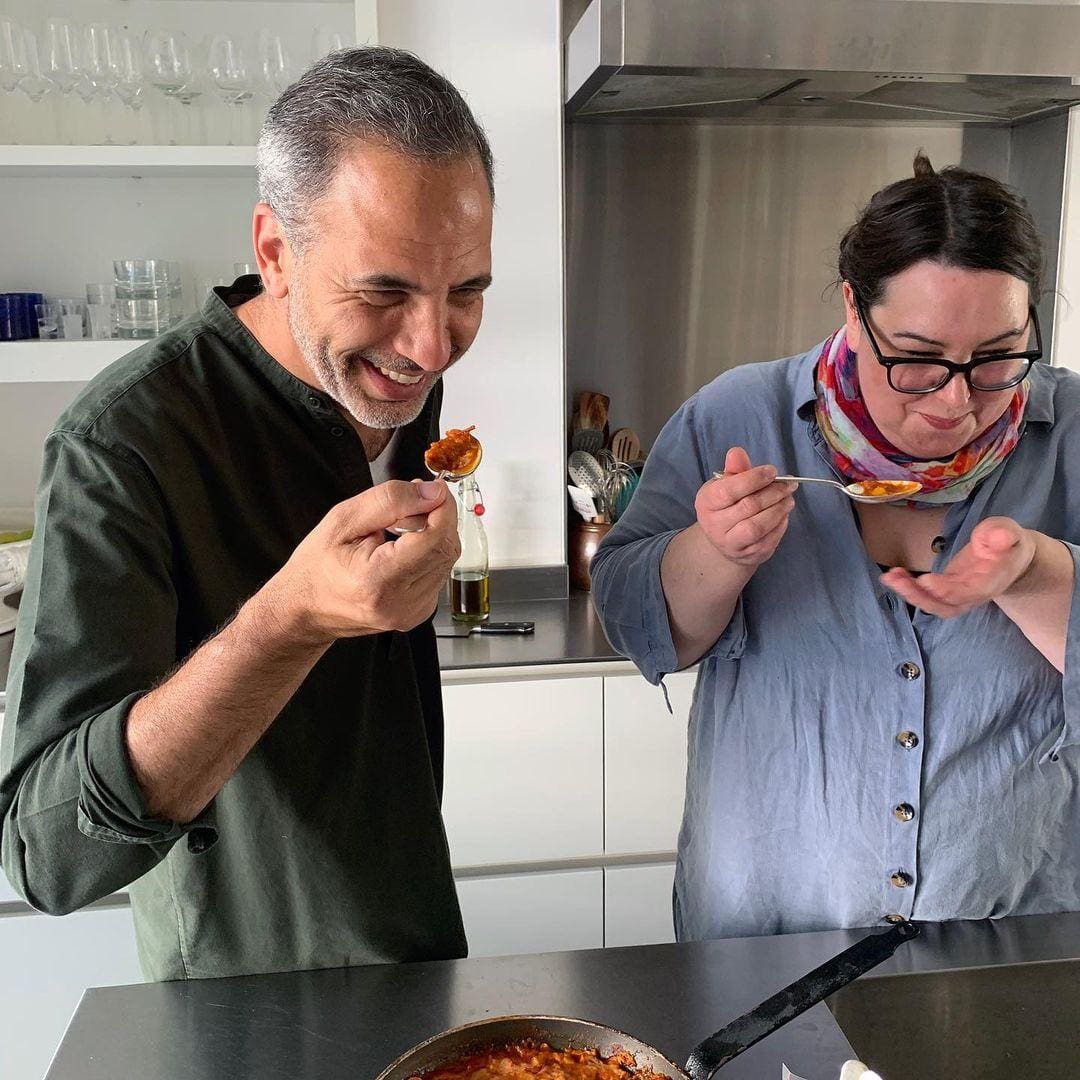
Lochmuller likes to bake soda bread and eat it warm, straight from the oven:
I think a good-old soda bread is a great one to start with if you’re a first-time baker. It’s quick and easy to assemble and uses baking soda as the leavening agent instead of yeast so no proving time required. You can get it mixed and in the oven within 20 minutes. Use a light hand when mixing the dough and only until it just comes together – this will ensure a nice and light soda bread. Buttermilk is traditionally used, but you can easily sub it for kefir or plain yoghurt.
I would eat it warm and with plenty of salted butter. Ideally 15 minutes or so after it comes out of the oven – you need to let the crumb settle or else it will seem gummy. It’s so good and comforting to have alongside a hearty bowl of soup. Leftover soda bread also toasts up a storm the next day (again with a nice smear of butter).
Toasted nuts, seeds and oats are great ingredients to add to your bread. I play around with different flours, depending on what I have to hand – sometimes I’ll add a bit of rye, spelt or wholemeal for a more wholesome and nutty flavour. You can add dried spices or fresh herbs along with your flour or spice pastes, like harissa, with your wet ingredients for a bit of a kick. Cheeses like grated cheddar or crumbled feta also work well. The possibilities are endless!
I love working with yeast so I bake a loaf of bread every Saturday morning – it’s part of my weekend ritual. I usually make a plain crusty white loaf because it’s quick and easy and versatile (it gives me an endless supply of breadcrumbs in the freezer). When my sourdough starter is in use (which, admittedly, right now is lying dormant in my fridge since the first lockdown), I love making rye bread – the dense and slightly sticky type with lots of seeds and cooked rye grains. Yum!
Read more: Top tips on cooking fine vegan food from plant-based pioneer Alexis Gauthier
